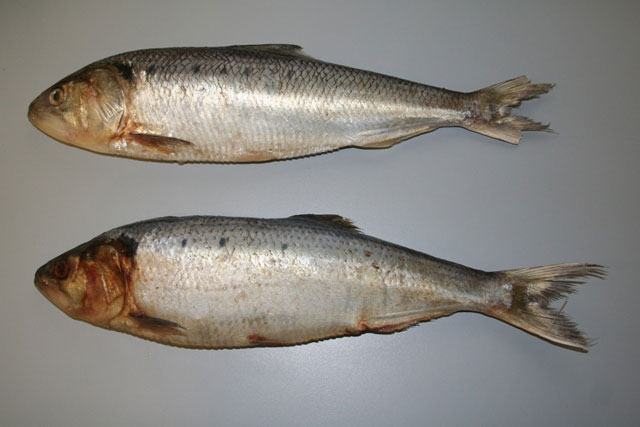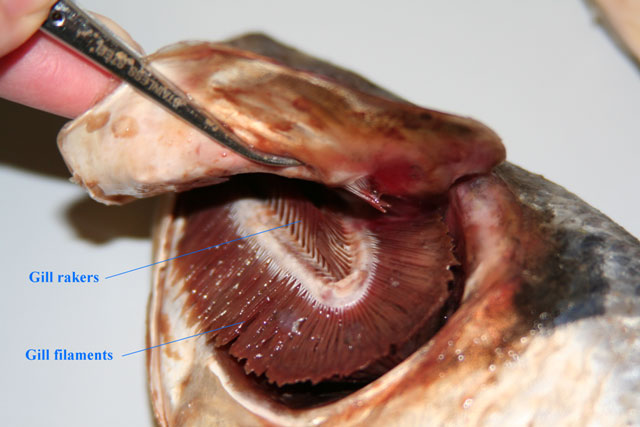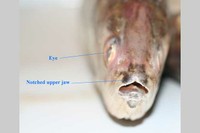Twaite Shad
Allosa fallax
The twaite shad is a species belonging to the herring family (Clupeidae). They are herring-like in shape and have a large dark spot behind the gill cover followed by up to 8 dark spots along the flank. Twaite shad are very similar in appearance to the Allis shad Alosa alosa. The only reliable way of separating the two species is to count the gill rakers (the comb-like structures on the upper sides of the gills that are used to filter zooplankton). Twaite shad have 40-60 coarse gill rakers on the first gill arch, while allis shad have 90-130 long, fine gill rakers. Both species occur along the Atlantic coast of Europe from southern Scandinavia to the Iberian Peninsula and in the Baltic and the Mediterranean.
Twaite shad are a schooling pelagic fish that return from the sea to home rivers to spawn during late spring, hence the alternative name ‘May fish’. After hatching fry develop and slowly drift downstream to spend most of their lives in the sea. Most adults die after spawning but around 25% will survive to be repeat spawners and may reproduce for 3-4 seasons. They mature at 30-40 cm in length (3-4 years of age) and can reach 60 cm and can live for 25 years.
Data sources
- Whitehead, P.J.P (1985)
- www.fishbase.org
Specimen details
The Guardian Angell's catch:

The upper one in the photo was 695g (whole weight), 42 cm total length. The lower one in the photo was 614g (whole weight), 42 cm total length.

Annotated gills

Annotated jaw
View the Discovery Zone Map.